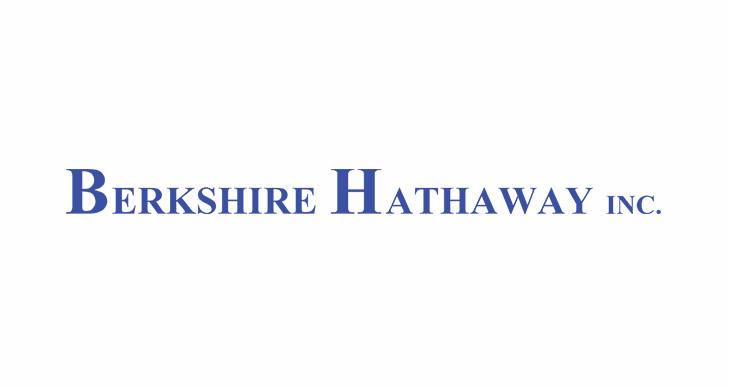 10-08-2020
10-08-2020
Berkshire Hathaway P&C reinsurance loss driven by Covid-19 & prior year liabilities

 Insurance Alertss
Insurance AlertssBerkshire Hathaway P&C reinsurance loss driven by Covid-19 & prior year liabilities
Berkshire Hathaway reported a significant level of losses within its property and casualty reinsurance business for the second-quarter of 2020, as the impacts of the Covid-19 pandemic and negative prior year reserve development on longer-tailed liabilities drove the division to a loss for the period.
Overall, Warren Buffett’s Berkshire Hathaway reported insurance segment operating revenues of $17.2 billion for Q2 2020, up on the prior year. Driving this was over $9 billion of revenues at Berkshire’s auto insurer GEICO, which benefited by lower claims frequency as well in the period.
As a result, on an underwriting basis, GEICO turned a $2.06 billion underwriting profit for the quarter, significantly up on Q2 2019’s $393 million. The Berkshire Hathaway Primary Group, where commercial risk and insurance lines are underwritten, the underwriting profit was just $96 million, down on the prior years $167 million.
The reinsurance business is where the impacts of the coronavirus and also prior year liability claims weighed, as the Berkshire Hathaway Reinsurance Group fell to an underwriting loss of -$1.103 billion for the second-quarter. A year ago the underwriting loss was just -$104 million. Insurance investment income meanwhile, was relatively flat at $1.613 billion for the period. The overall insurance segment drove Berkshire Hathaway net earnings of $806 million and net investment income of $1.368 billion.
On the impacts of Covid-19 to its business, Berkshire Hathaway explained, “Underwriting results in 2020 of our commercial insurance and reinsurance businesses were negatively affected by estimated losses and costs associated with the COVID-19 pandemic, including estimated provisions for claims and uncollectible premiums and incremental operating costs to maintain customer service levels at certain underwriting units. The potential effects of the pandemic may be further affected by future judicial rulings and regulatory and legislative actions pertaining to insurance coverage and claims that we cannot reasonably estimate at this time. We also anticipate our underwriting results for the remainder of 2020 and the first quarter of 2021 will be adversely affected from lower premiums for certain business attributable to premium credits granted to policyholders and when premiums are a function of the insured’s payroll.”
On GEICO, how Covid-19 affected the business and drove its much higher than normal earnings, Berkshire Hathaway explained, “Significant declines in losses and loss adjustment expenses attributable to lower claims frequencies driving by policyholders in 2020 during the COVID-19 pandemic.”
The Berkshire Hathaway primary insurance business, were the BH Specialty unit sits, did suffer an impact from Covid-19 in terms of credit claims and losses, but these weren’t broken out and so are likely not significant. It is the reinsurance division that felt the brunt of the pandemic again in the second-quarter.
Premiums were up significantly, at over $2.7 billion compared to $2.3 billion in the prior year period. But an underwriting loss of -$643 million was much worse than the prior years profit of $198 million. Berkshire Hathaway’s P&C reinsurance businesses suffered $350 million of claims related to the Covid-19 pandemic during the second quarter, taking the first-half 2020 total to $575 million.
This seems a lot lower than other major reinsurance groups and it could be notable that Berkshire Hathaway cites these losses as due to claims, rather than an IBNR reserve estimate as others have done with their higher figures. Could that mean Berkshire continues to report Covid claims each quarter, when some others just adjust the initial reserve they set earlier this year? It’s possible. $39 million of this was allowed for credit losses related to the pandemic during the first-half of the year.
Berkshire Hathaway’s P&C reinsurance group was also hit by a net increase in estimated ultimate liabilities for prior years’ loss events amounting to $439 million in 2020 and $269 million in 2019. The company said that the increase in 2020 is from longer-tailed casualty reinsurance lines, such as legacy environmental, asbestos and other latent injury claims.
There were no significant property catastrophe events for Berkshire Hathaway during the first-half, the company said. As a result, the combined ratio for P&C reinsurance at Berkshire came out at 123.7% for the second-quarter of 2020. The life and health reinsurance business at Berkshire Hathaway delivered an underwriting profit of $41 million during the second-quarter, beating the prior year.
The retroactive reinsurance line suffered a -$460 million underwriting loss though. Berkshire Hathaway’s poor P&C reinsurance result was offset by the positive result at GEICO and the results across the rest of the conglomerate.
The adverse prior year development on longer-tailed casualty exposures may be something to watch over the next quarters, as it aligns with the experience of some other major players and could be a sign of the casualty line problems that have dogged certain underwriters in marketplaces like Lloyd’s.
Source: Reinsurance News

http://insurancealerts.in/